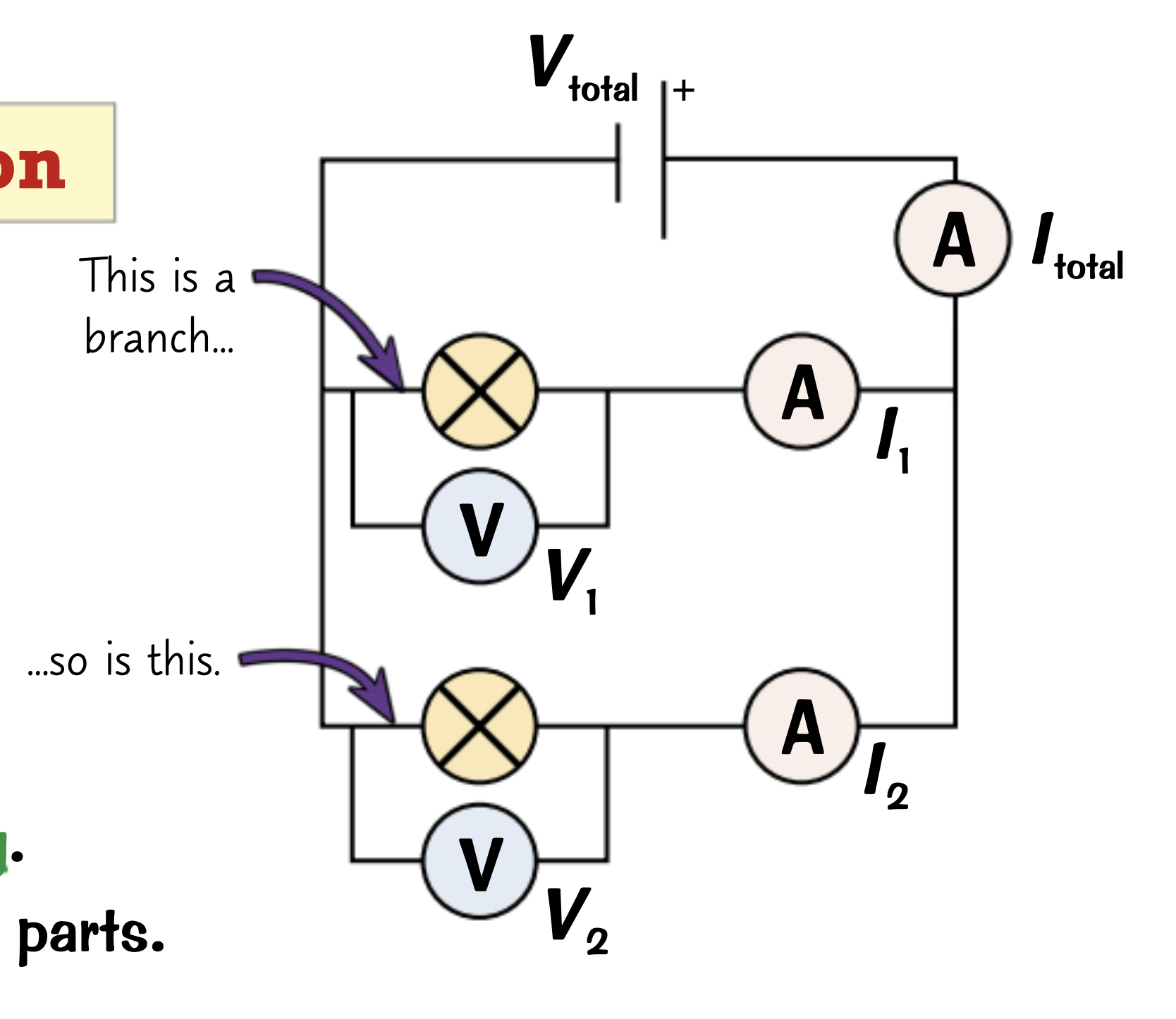Parallel circuits
1/7
Earn XP
Description and Tags
Name | Mastery | Learn | Test | Matching | Spaced |
|---|
No study sessions yet.
8 Terms
What is a parallel circuit?
a circuit where each component is separately connected (except ammeters, which are always connected in a series)
How does a parallel circuit work and what does it look like?
each component is separately connected to the +ve and -ve of the supply
if you remove or disconnect one of them it will hardly affect the others at all
you have to be able to turn everything on and off separately

Where are parallel circuits used?
cars
household electronics
What do everyday circuits usually consist of?
A combination of parallel and series circuits
What are the rules of a parallel circuit?
potential difference is the same across all components
current is shared between branches
adding a resistor reduces the total resistance
How is potential difference the same across all components?
All components get the full source of potential difference, so the potential difference is the same across all components
This means that identical bulbs connected in parallel will all be at the same brightness

How is current shared between branches?
The total current flowing around the circuit is equal to the total of all currents through the seperate components
In a parallel circuit there are junctions where the current either splits or rejoins. The total current going into a junction has to equal the total number leaving
If 2 identical components are connected in parallel then the same current will flow through each component

How can adding a resistor in parallel reduce the total resistance in a parallel circuit?
in parallel, both resistors have the same potential difference across them as the source
This means the pushing force making the current flow is the same as the potential difference for each resistor you add
But by adding another loop, the current has more than one direction to go in
This increases the total current that can flow around the circuit. using V=IR, an increase in current means a decrease in the total resistance of the circuit